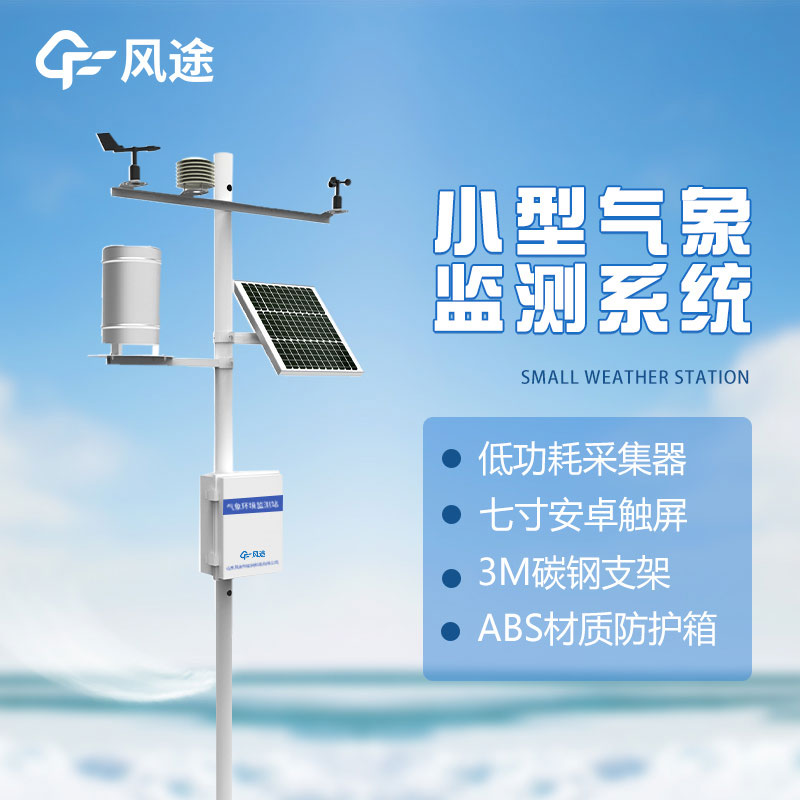For some specific grape fungal diseases, since their occurrence requires specific environmental conditions, we can accurately predict the onset of these diseases based on these specific conditions and take targeted preventive and control measures accordingly, rather than just making some general and ineffective prevention and control appeals.
The occurrence and development of grape fungal diseases are closely related to meteorological conditions such as temperature, humidity, and light in the environment. For example, powdery mildew is generally likely to occur under conditions of 40% - 70% relative humidity, 20 - 25°C temperature, and sufficient light. Downy mildew is prone to prevalence when the air humidity is greater than 85% and the temperature is 15 - 20°C. Due to the clear and specific onset conditions of these diseases, various meteorological data in the environment can be monitored in real - time and accurately through a Small automatic weather station. When the monitored environmental conditions meet the onset requirements of a certain disease, the possible occurrence of the disease can be predicted in a relatively detailed manner.
Based on such predictions, specific prevention and control measures can be taken. For example, for powdery mildew, when its possible occurrence is predicted, the vineyard can be promptly ventilated and exposed to light to reduce the humidity in the garden, and at the same time, fungicides such as triadimefon and carbendazim can be sprayed for prevention. For downy mildew, when the humidity and temperature are suitable for its occurrence, agents such as metalaxyl and cymoxanil can be sprayed in advance, and the fallen leaves and diseased residues in the vineyard can be cleaned up in a timely manner to reduce the number of pathogenic bacteria. These measures are formulated based on an accurate understanding of the disease onset conditions and detailed predictions, and they are highly targeted and operable, capable of effectively preventing and controlling diseases, rather than just staying at empty appeals, such as merely emphasizing the importance of disease prevention and control without specific action plans.
Modern Small automatic weather stations are standardly equipped with basic sensors such as air temperature and humidity sensors, wind speed/direction sensors, and rainfall sensors. However, in vineyards, sensors for light intensity (including photosynthetically active radiation PAR), leaf wetness sensors (monitoring the leaf surface dew - fall duration), and soil moisture sensors (monitoring temperature, humidity, and EC value in layers) will be added according to the needs of grape cultivation.
The Small automatic weather station in the vineyard preferably uses a 4G wireless communication module to ensure that data can be transmitted to a remote server or user terminal in real - time and stably. 4G has a fast transmission speed and a wide coverage range, which can meet the needs of a large amount of data transmission of the Small automatic weather station. However, to prevent 4G network failures, a GPRS or LoRa wireless transmission module can be equipped as an alternative transmission method. GPRS has a relatively slow transmission speed but good stability and is suitable for scenarios where the data volume is small and the real - time requirement is not particularly high. LoRa has a long transmission distance and low power consumption, which has certain advantages in some remote areas or vineyards with weak network signals.
The data transmission protocol uses standard Modbus or TCP/IP protocols for data transmission to ensure data accuracy and compatibility.
It is equipped with one or more high - efficiency monocrystalline silicon solar panels. The power is determined according to the power consumption of the Small automatic weather station and local sunshine conditions, generally ranging from 50 - 100W. The solar panels are installed in a south - facing and unobstructed position to ensure sufficient sunlight exposure. The tilt angle of the solar panels can be adjusted according to the local latitude to obtain the best solar conversion efficiency.
It also has maintenance - free lead - acid batteries or lithium - ion batteries as energy storage devices. The battery capacity is determined according to the power consumption of the Small automatic weather station and the number of consecutive rainy days, generally capable of meeting the power supply demand for 3 - 7 days.
Of course, in vineyards with access to mains electricity, mains electricity can be used as a backup power source. The Small automatic weather station is powered by a regulated power supply and a UPS uninterruptible power supply to ensure automatic switching to mains power when solar power is insufficient or fails, ensuring the normal operation of the Small automatic weather station.
Users can develop a dedicated data monitoring platform or directly use the free cloud platform provided by the manufacturer. Users can log in to the platform through terminal devices such as computers and mobile phones to view various meteorological data collected by the Small automatic weather station in real - time. The platform interface is simple and intuitive, and the data is presented in the form of charts, curves, etc., which is convenient for users to analyze and compare.
The platform has a data query function. Users can query historical data according to conditions such as time range and sensor type.
The platform has a data anomaly alarm function. When the data collected by the sensor exceeds the normal range or the device malfunctions, the platform automatically sends an alarm message to the user to remind the user to handle it in a timely manner. The alarm methods can adopt various forms such as text messages, emails, and APP push notifications to ensure that users can receive the alarm message in a timely manner.
In summary, the Small automatic weather station can provide comprehensive, accurate, and real - time meteorological data services for vineyards, helping growers manage vineyards scientifically, improve the yield and quality of grapes, effectively prevent the occurrence of diseases and pests, and achieve intelligent and precise grape cultivation.

Article address:https://www.sqqx.net/en/news/590.html

 +86 15898932201
+86 15898932201



